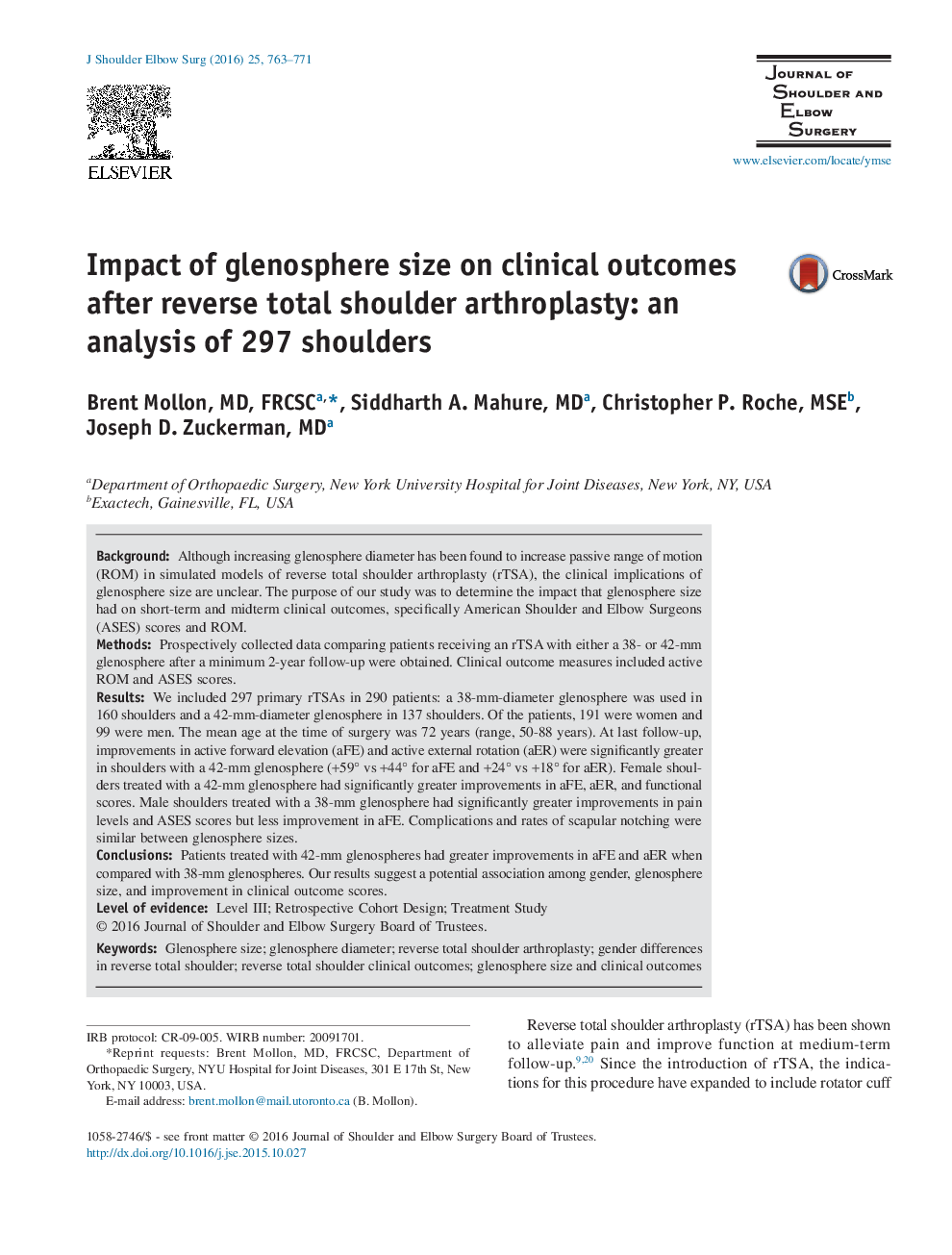| کد مقاله | کد نشریه | سال انتشار | مقاله انگلیسی | نسخه تمام متن |
|---|---|---|---|---|
| 4072940 | 1266965 | 2016 | 9 صفحه PDF | دانلود رایگان |
BackgroundAlthough increasing glenosphere diameter has been found to increase passive range of motion (ROM) in simulated models of reverse total shoulder arthroplasty (rTSA), the clinical implications of glenosphere size are unclear. The purpose of our study was to determine the impact that glenosphere size had on short-term and midterm clinical outcomes, specifically American Shoulder and Elbow Surgeons (ASES) scores and ROM.MethodsProspectively collected data comparing patients receiving an rTSA with either a 38- or 42-mm glenosphere after a minimum 2-year follow-up were obtained. Clinical outcome measures included active ROM and ASES scores.ResultsWe included 297 primary rTSAs in 290 patients: a 38-mm-diameter glenosphere was used in 160 shoulders and a 42-mm-diameter glenosphere in 137 shoulders. Of the patients, 191 were women and 99 were men. The mean age at the time of surgery was 72 years (range, 50-88 years). At last follow-up, improvements in active forward elevation (aFE) and active external rotation (aER) were significantly greater in shoulders with a 42-mm glenosphere (+59° vs +44° for aFE and +24° vs +18° for aER). Female shoulders treated with a 42-mm glenosphere had significantly greater improvements in aFE, aER, and functional scores. Male shoulders treated with a 38-mm glenosphere had significantly greater improvements in pain levels and ASES scores but less improvement in aFE. Complications and rates of scapular notching were similar between glenosphere sizes.ConclusionsPatients treated with 42-mm glenospheres had greater improvements in aFE and aER when compared with 38-mm glenospheres. Our results suggest a potential association among gender, glenosphere size, and improvement in clinical outcome scores.Level of evidenceLevel III; Retrospective Cohort Design; Treatment Study
Journal: Journal of Shoulder and Elbow Surgery - Volume 25, Issue 5, May 2016, Pages 763–771
